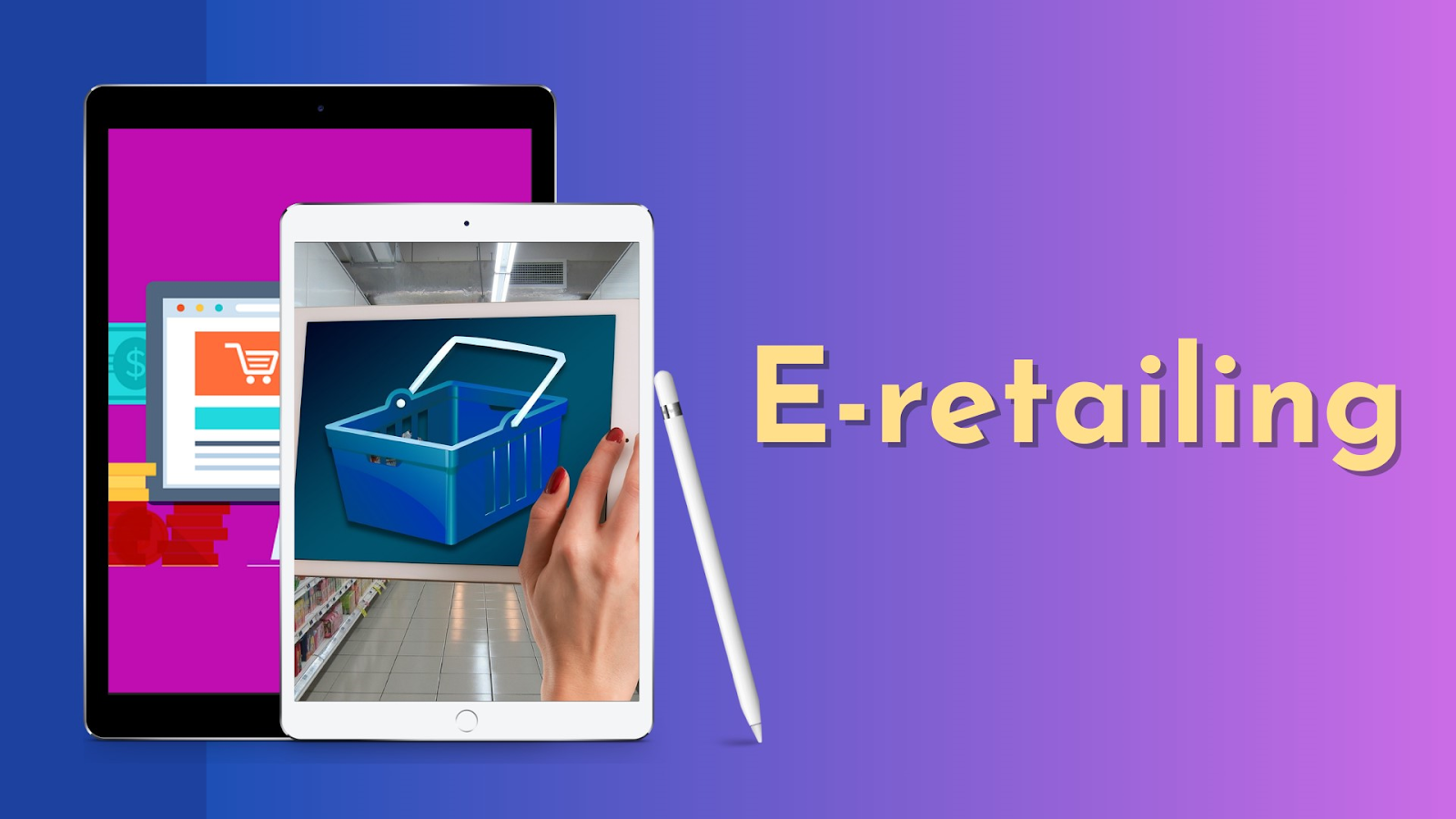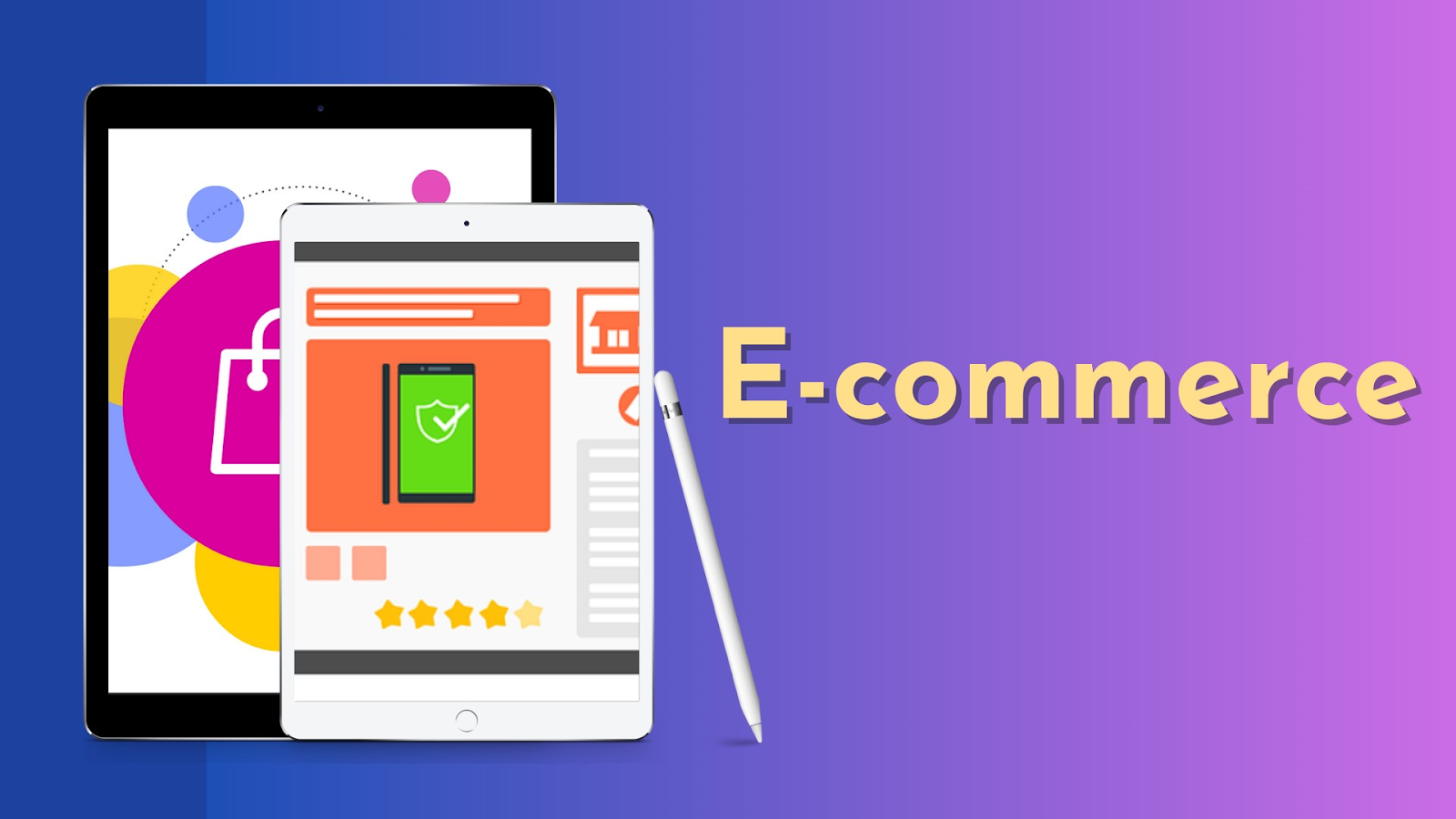E-retailing vs E-commerce: What's the Difference?

It’s no secret that terms like “e-retailing” and “e-commerce” have taken the spotlight in recent times. According to Statista, revenue is estimated to expand at an annual rate of 11.17% (CAGR 2023-2027), resulting in a market volume of $5.56 trillion by 2027. Meanwhile, the return of brick-and-mortar shops in the world after the pandemic adds an interesting twist to the choices that new businesses must make. But wait, there’s still a lingering cloud of confusion surrounding the distinctions between these two concepts.
This article delves into the nuances of e-retailing vs e-commerce, dissecting their differences and highlighting the benefits that can shape a business’s trajectory in an ever-evolving market.
Understanding the differences between e-retailing and e-commerce
What is E-Retailing?
E-retailing, also known as electronic retailing, is the process of selling products or services directly to consumers through online platforms. This approach leverages websites, mobile applications, and other digital channels to display and sell products to potential buyers. E-retailers usually operate and maintain their online stores, where customers can explore a diverse range of products, make purchases, and arrange for home delivery.

One of the key advantages of e-retailing is the convenience it offers both customers and businesses. Consumers no longer have to physically visit stores to make purchases; they may do so at any time and from any location. For businesses, e-retailing opens up new opportunities to reach a global customer base, expand their market reach, and reduce operational costs.
What is E-commerce?
E-retailers usually operate and maintain their online stores, with AI conversational chatbots enabled, developed by AI development company, where customers can explore a diverse range of products, make purchases, and arrange for home delivery.
E-commerce, on the other hand, is a broader term that encompasses various forms of online commercial transactions. It includes not only e-retailing but also other activities such as online auctions, business-to-business transactions, and online ticket booking. E-commerce can take place on platforms like Amazon, eBay, or Etsy, where multiple sellers offer their products to a wide range of customers.

While e-retailing focuses on direct selling to consumers, e-commerce provides a platform for businesses to connect with customers and facilitate transactions. E-commerce platforms act as intermediaries, enabling sellers to showcase their products, handle payments, and manage logistics. This allows businesses to tap into an existing customer base, benefit from established infrastructure, and focus on product quality and marketing strategies.
E-retailing vs E-commerce: Key differences
Deciphering the distinctions between e-retailing and e-commerce is essential for gaining a comprehensive understanding of these two closely related yet divergent modes of conducting online business. Here’s some highlights about the key differences between e-retailing and e-commerce:
| Aspect | E-retailing | E-commerce |
|---|---|---|
| Definition | E-retailing involves selling products through online platforms, often with a brick-and-mortar presence. This approach seamlessly integrates traditional in-store retail with online sales channels. | E-commerce, on the other hand, is the practice of conducting commercial transactions entirely online, without a physical storefront. |
| Physical Presence | E-retailers typically maintain a physical store presence alongside their online platform. This integration allows customers to choose between shopping online or visiting a physical store. | E-commerce operates primarily in the virtual space, with no brick-and-mortar storefronts. It's entirely web-based, and customers interact with the business exclusively online. |
| Customer Experience | E-retailing emphasizes creating an omnichannel experience. It seeks to blend online and in-store interactions seamlessly. For example, customers may order online and pick up their items in-store, fostering a cohesive shopping journey. | E-commerce prioritizes providing a seamless online shopping experience. All customer interactions, from browsing to purchasing, occur on the website or app. |
| Product Range | E-retailers may offer a combination of products available in physical stores and additional items exclusively online. This broadens their product range, catering to both in-store and online shoppers. | E-commerce platforms offer an extensive range of products exclusively online. They have the flexibility to showcase a wide variety of items without physical limitations. |
| Inventory Management | E-retailers often face the challenge of synchronized inventory management between their online and offline sales channels. Inventory must be accurately tracked to avoid overselling or underselling. | E-commerce primarily manages inventory within the digital realm. Inventory levels are closely monitored within the online platform, ensuring real-time accuracy. |
| Fulfillment | E-retailers provide customers with options for fulfillment, including in-store pickup and traditional shipping methods. This flexibility caters to various customer preferences. | E-commerce relies on shipping and delivery for order fulfillment. Products are shipped directly to the customer's chosen location, typically through third-party logistics providers. |
| Target Audience | E-retailers target a mix of customers, including those who prefer in-store shopping and those who prefer online shopping. Their audience includes both online and offline consumers. | Online shoppers who prefer to do their purchasing from the comfort of their own computers or mobile devices are the primary focus of e-commerce businesses. |
| Examples | A classic example of E-retailing is a traditional retailer with an online store, offering a range of products for purchase online and in-store. They may also provide options for customers to buy online and pick up in-store (click-and-collect). | Online-only marketplaces like Amazon or eBay represent E-commerce. These platforms exclusively operate in the digital space, connecting buyers and sellers online. |
| Business Model | E-retailing frequently adopts a hybrid business model, blending income sources from both online and offline sales. This diversification helps cushion against market fluctuations. | E-commerce primarily follows an online-only business model, generating revenue exclusively from online transactions. This model minimizes overhead costs associated with physical retail. |
| Marketing Strategy | E-retailers employ digital marketing strategies to drive online and offline foot traffic. Their marketing efforts encompass both online advertising and in-store promotions to create a cohesive brand presence. | E-commerce businesses focus their marketing efforts on digital channels, including social media advertising, search engine optimization (SEO), email marketing, and affiliate marketing, to attract and engage online customers. |
| Overhead Costs | E-retailers may face potentially higher overhead costs due to maintaining physical storefronts, including rent, utilities, and staffing for brick-and-mortar locations. | E-commerce businesses typically have lower overhead costs as they operate in a digital environment, eliminating expenses related to physical store maintenance. |
| Geographic Reach | The geographic reach of E-retailing is often concentrated in regions with physical store locations. Customers from these areas have the option to shop in-store or online. | E-commerce has the potential to reach a global audience without physical boundaries. Online businesses can serve customers from different regions and countries, expanding their market reach significantly. |
E-retailing vs E-commerce: Important considerations when choosing between the two
When deciding between e-retailing and e-commerce, there are several factors to consider. Evaluating your business objectives, understanding your target audience, and considering the nature of your products or services is crucial. Let’s take a closer look at some key considerations:
1. Nature of Products or Services
Take into account the types of products or services you provide. If you have a niche market or unique products, e-retailing might be the better option. It allows you to curate your offerings and provide a personalized shopping experience. Conversely, if you have a wide range of products or aim to reach a broader customer base, e-commerce platforms can provide the necessary exposure.
2. Control and Branding
E-retailing gives you complete control over your online store’s design, branding, and customer experience. You can tailor the website to reflect your brand identity and create a seamless shopping journey. E-commerce platforms often offer predefined templates and limited customization options, providing convenience and exposure but potentially less control over branding and the user experience.
3. Logistics and Fulfillment
Consider the logistics and fulfillment aspects of your business. E-retailing requires you to handle order processing, inventory management, and shipping. If you have the resources and infrastructure to manage these efficiently, it can be a cost-effective option. However, if logistics and fulfillment pose challenges, e-commerce platforms can handle these tasks for you, allowing you to focus on other aspects of your business.
4. Budget and Overhead Costs
Evaluate your budget and overhead costs. E-retailing may require initial investments in a website and hosting, potentially leading to higher initial expenses. However, it can be more cost-effective in the long run. E-commerce platforms generally involve lower upfront costs but may include ongoing fees or commission structures.
5. Technical Expertise
Assess your technical expertise. E-retailing demands some technical know-how to set up and manage your online store. E-commerce platforms are typically more user-friendly, but you may still need technical skills for customization and integration with third-party services.
6. Target Audience and Shopping Behavior
Understand your target audience and their shopping behavior. If your customers prefer a mix of online and in-store shopping, or if you want to cater to both online and offline segments, e-retailing’s omnichannel approach may align better. Conversely, if your audience predominantly shops online and seeks convenience, e-commerce might be the more suitable choice.
7. Business Goals and Scalability
Define your business goals and growth aspirations. E-retailing offers flexibility for businesses looking to maintain a physical presence while expanding online. If your goal is rapid online expansion or global market penetration, e-commerce’s digital-only model provides scalability and a broader reach.
8. Competitive Landscape
Research your competitors and industry trends. Analyze how other businesses in your sector are reaching their customers. If your competitors are thriving through e-retailing or e-commerce, it may offer insights into which approach is more effective within your industry.
9. Marketing and Customer Acquisition
Examine your marketing strategy and customer acquisition methods. E-retailing allows for localized marketing efforts, leveraging in-store promotions and events. E-commerce relies heavily on digital marketing channels, including online advertising and SEO. Your marketing capabilities and strategies will play a significant role in your choice.
Here are some additional tips for making a decision:
- Start small: If you are new to e-commerce, it may be a good idea to start by selling on an e-commerce platform. This will allow you to test your products and market strategy without having to invest too much money. Once you have gained some experience, you can consider moving to e-retailing if it is a better fit for your business.
- Use a hybrid approach: You may also want to consider a hybrid approach, where you sell on both e-commerce platforms and your own website. This can give you the best of both worlds, as you will be able to reach a wider audience while also maintaining control over your branding and customer experience.
- Get help from experts: If you need assistance in deciding between e-commerce and e-retailing or need support in establishing and overseeing your online store, numerous e-commerce specialists are available to help you.
Ultimately, when weighing the options of e-retailing vs e-commerce, your decision should be driven by your particular business needs and objectives. With these considerations in mind, you’ll be able to make a well-informed decision that will help you grow and succeed in the retail industry.
Tips for starting an e-retail or e-commerce business
If you have decided to venture into e-retailing or e-commerce, here are some tips to help you get started:
- Research and Plan: Conduct thorough market research to understand your target audience, competition, and market trends. Create a thorough business plan that details your goals, marketing strategies, and financial projections.
- Build a User-Friendly Website: If you opt for e-retailing, invest in a user-friendly website that showcases your products effectively. Ensure seamless navigation, responsive design, and secure payment gateways to enhance the customer experience.
- Optimize for Search Engines: Execute search engine optimization strategies to improve your website’s visibility in search engine results. Focus on relevant keywords, meta tags, and compelling content to attract organic traffic and increase conversions.
- Leverage Social Media: Take advantage of social media to spread the word about your products, interact with consumers, and build brand awareness. Develop a content strategy and utilize platforms like Facebook, Instagram, and Pinterest to showcase your offerings and connect with your target audience.
- Provide Excellent Customer Service: Customer satisfaction is crucial in e-retailing and e-commerce. Respond quickly to customer questions, make returns and exchanges easy, and provide clear and transparent communication throughout the purchase process.
Why Magento is the best tool for e-commerce businesses?
If you are ready to embark on your e-retailing or e-commerce journey, consider using Magento, a powerful and customizable platform. You can build a powerful online store, handle inventory, and accept several payment methods with the help of Magento’s many features and extensions. With its flexibility and scalability, Magento provides an excellent foundation for your online business.

Reasons why Magento is the go-to platform for e-commerce ventures.
1. Scalability: Unleash Your Business’s Potential
One of Magento’s most notable attributes is its scalability. Whether you’re a budding startup or a well-established enterprise, Magento can effortlessly accommodate your growth. As your customer base expands and your product catalog flourishes, Magento ensures that your online store remains responsive and high-performing.
2. Customization: Crafting Unique Brand Experiences
Your brand has a specific identity, and your online store should showcase that identity. With Magento’s extensive customization capabilities, you have the creative freedom to design a tailored and branded shopping experience. From the visual aesthetics to the addition of specialized features, Magento empowers you to make your store truly your own.
3. Open Source Freedom: No Licensing Constraints
The open-source nature of Magento means freedom. It’s not only cost-effective but also liberates businesses from the shackles of licensing costs. You have the flexibility to modify and adapt the platform to meet your specific needs. Moreover, Magento thrives on a dynamic developer community continually enhancing its capabilities.
4. Fortified Security: Shielding Your Business and Customers
Security is paramount in the e-commerce landscape. Magento prioritizes this aspect with built-in security features such as data encryption, two-factor authentication, and proactive security updates. This commitment to safeguarding your store and customer data ensures peace of mind in an increasingly digital world.
5. Feature-Rich Out of the Box: Ready to Go
Time is precious, especially when launching an online store. Magento doesn’t hold you back; it comes equipped with a robust set of features right out of the box. This includes comprehensive tools for product management, customer interaction, order processing, and more, reducing the need for additional extensions and expediting your setup.
6. Marketing Arsenal: Elevating Your Visibility
Effective marketing is the lifeblood of e-commerce success. Magento equips you with a wide array of marketing tools, including SEO optimization, email marketing, coupon and discount management, loyalty programs, and in-depth analytics to measure performance and fine-tune your strategies.
7. Seamless Integration: A Connected Ecosystem
In today’s interconnected world, integration is key. Magento seamlessly integrates with a variety of third-party software, from payment gateways to shipping carriers, CRM systems, and marketing automation platforms. This streamlines your e-commerce operations and delivers a seamless shopping experience to your customers.
8. Support and Community: A Network at Your Service
Last but not least, Magento boasts a thriving community of users, developers, and experts. Should you encounter challenges or require assistance, a wealth of resources, forums, documentation, and support options are at your disposal. Your journey with Magento is supported every step of the way.
Ready to kickstart your e-retailing or e-commerce journey? Explore the powerful features of Magento and start building your online store today.
Conclusion
In conclusion, e-retailing and e-commerce are two distinct yet interconnected concepts in the world of online business. While e-retailing focuses on direct selling to consumers through owned online stores, e-commerce encompasses various forms of online commercial transactions facilitated by platforms. By understanding the differences between e-retailing and e-commerce and considering key factors, you can make an informed decision for your business. Whether you choose to embark on e-retailing or leverage established e-commerce platforms, the digital landscape offers ample opportunities for growth and success. Take your first steps and unlock the vast potential of online retailing.
Learn more: Why Is Magento Still Chosen In 2025?






![Top 20+ Must-have Shopify Apps for 2025 [Free & Paid] - Mageplaza](https://cdn2.mageplaza.com/media/blog/must-have-shopify-apps/top-must-have-shopify-apps.png)
![[2025 Updates] Top 10+ Upsell Apps for Shopify - Mageplaza](https://cdn2.mageplaza.com/media/blog/best-upsell-shopify-app/cover.png)